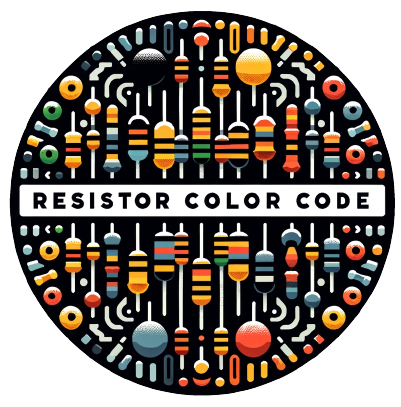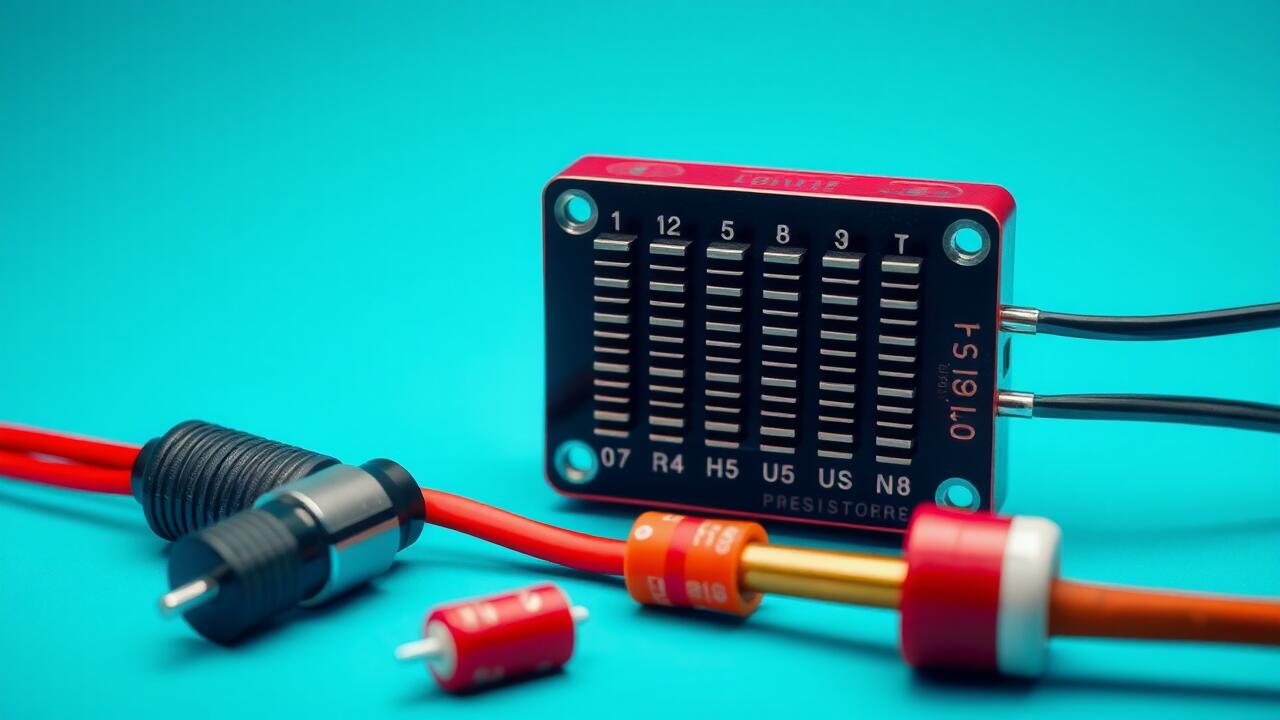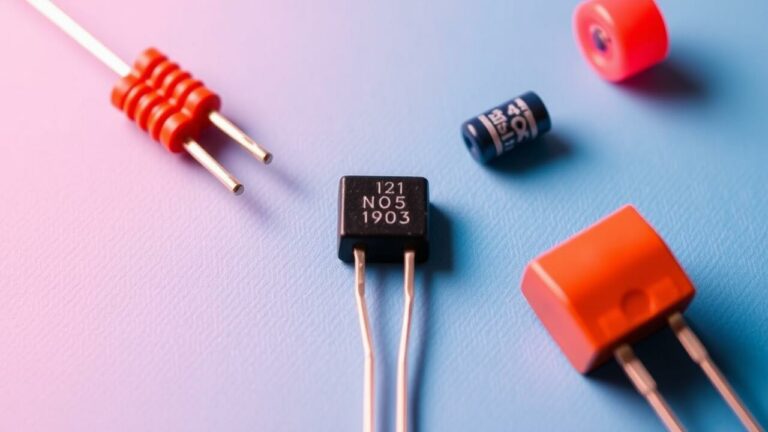How to Remember Resistor Color Code
Practice Makes Perfect
To truly conquer the resistor color code, one must dive into a whirlpool of repetition and hands-on practice. Just think about it: tackling exercises that challenge you to decode those vibrant color bands isn’t just beneficial; it’s like a workout for your brain that boosts memory retention to new heights! Picture yourself regularly putting your skills to the test with flashcards or jumping into interactive quizzes—each session ramping up your confidence and familiarity with this colorful coding system. This dynamic engagement doesn’t merely solidify knowledge; it engraves it in your mind, making recall during practical applications feel almost second nature.
But wait, there’s more! When you bring the color code into real-world scenarios, oh boy, does understanding deepen! Imagine constructing simple circuits or diving headfirst into troubleshooting existing ones—it’s where theory collides spectacularly with practice. You get to witness firsthand how those resistor values come alive in action! This immersive approach not only cements what you’ve learned but also ignites a genuine appreciation for the intricate dance of electronics at play. By weaving together theoretical insights and tangible experiences, you’re crafting an unshakeable foundation ready for even greater adventures in this electrifying field.
Exercises to Reinforce Learning
Diving into targeted exercises can truly amplify your knack for recalling those pesky resistor color codes. Picture this: you whip up some flashcards, colors splashed boldly on one side, their numerical values quietly waiting on the flip side. This tactile dance of learning—flipping cards back and forth—cements that vital connection between hue and number! And oh, don’t forget to throw in a little pressure; testing yourself under a time crunch mimics those high-stakes moments when swift recall is key.
Now, let’s not overlook another gem of practice: decoding color codes straight from actual resistors! By gathering an eclectic mix of these little components, you’re stepping into a hands-on playground where theory meets reality. Take note of each resistor’s vibrant bands and then put them to the test with a multimeter—what an exhilarating way to confirm your findings! This practical engagement not only fortifies your memory but also boosts your confidence as you navigate the realm of electronic parts like a pro.
Common Mistakes to Avoid
Ah, the delightful maze of resistor color codes! One of the most frequent snafus stems from a simple yet perilous misreading of those colorful bands—oh, how they can lead one astray in their quest for accurate resistance readings. It’s crucial to remember: follow that rainbow with meticulous care! The first band? That’s your leading significant digit, glowing like a beacon. And what about the last band? Ah yes—the multiplier, lurking at the end like a final twist in a gripping tale.
But wait! Confusion often sneaks in when folks are hasty or fail to distinguish between hues that seem almost identical—like red and orange dancing tantalizingly close together. A little patience goes a long way here; align your resistor just right and soak it all in under natural light conditions to keep misunderstandings at bay.
Then there’s another pesky pitfall: overlooking tolerance while crunching circuit values. Imagine relying purely on resistance without giving due credit to that elusive tolerance band—it can spell trouble and usher in unexpected performance hiccups within your circuit’s realm. Don’t forget this vital piece of information! Typically adorned in gold or silver, the tolerance band is not just decoration; it whispers secrets about accuracy you simply cannot afford to ignore. Skipping over this detail could ripple through electronic devices, particularly where precision reigns supreme and exact resistance is paramount for peak performance.
Misinterpretations of Color Codes
Errors in deciphering resistor color codes can spiral into considerable blunders within the realm of electronics. A particularly prevalent pitfall emerges from the muddled mix-up between hues that are strikingly similar—think brown versus red, or blue against green. Such misinterpretations can lead to faulty assumptions about a resistor’s value, potentially triggering circuit malfunctions or unpredictable behavior that nobody saw coming. And let’s not forget how environmental nuances—like lighting conditions—can further cloud one’s ability to accurately identify those elusive colors, making manual readings even trickier.
Yet another common conundrum lies in the sequence of color reading itself. It happens: individuals sometimes find themselves unwittingly scanning colors out of order, especially if they’re not well-acquainted with the standard protocol for these colorful bands. Ignoring the established color-coding scheme? That’s a recipe for serious confusion when it comes to understanding what a resistor truly brings to the table. By honing in on meticulous attention to detail and adopting a consistent approach, you can significantly reduce these risks and ensure precise application of resistor values across your various projects!
Advanced Techniques for Professionals
In the quest for workflow efficiency, savvy professionals often gravitate toward a myriad of digital tools and applications crafted specifically for deciphering resistor color codes. These clever resources not only bolster accuracy but also significantly diminish the chances of blunders creeping into calculations. Picture this: many apps boast features like automatic color recognition via camera integration, transforming the identification process into an engaging and intuitive experience. This fusion of technology doesn’t just save precious time; it empowers engineers and technicians to uphold unwavering precision in their endeavors.
But hold on—there’s more! Beyond harnessing these high-tech gadgets, professionals can elevate their expertise by diving headfirst into continuous education surrounding resistor color codes and related electronics principles. Online courses and workshops are treasure troves that deepen comprehension while unveiling advanced topics such as tolerance variations, temperature coefficients, and intricate resistor networks. Keeping pace with the latest design methodologies and industry standards sharpens skills further still, enhancing overall competency in the vast realm of electronics. With a wealth of educational resources at their fingertips, professionals can confidently stay ahead in their field while mastering the nuanced complexities woven throughout resistor color codes.
Using Digital Tools and Apps
Digital tools and applications have radically reshaped how people grasp and utilize the resistor color code. Imagine a landscape brimming with online resources—color code calculators, interactive apps—all designed to whisk users away into the realm of resistance values in a flash! Many of these digital wonders boast sleek, intuitive interfaces paired with visual aids that illuminate understanding like never before. Picture this: some applications even allow users to scan real-life resistors, delivering instant feedback on their values via camera integration—a blend of reality and technology!
Imagine weaving these cutting-edge solutions into your learning rituals; it can catapult you toward mastering the color code at lightning speed! Some apps sprinkle in elements of gamification, igniting engagement and retention while transforming the educational journey into an exhilarating adventure. Users find themselves tracking progress and sparring with peers in friendly competition, all fostering an environment buzzing with motivation. Embracing technology not only streamlines the learning process but also equips individuals for real-world applications in electronics—bolstering their skill set for professional endeavors ahead!
| App Name | Platform | Features | User Rating |
|---|---|---|---|
| Resistor Color Code Calculator | iOS, Android | Color code decoding, resistor value calculation | 4.8/5 |
| Color Code Quiz | Web, iOS | Gamified quizzes, progress tracking | 4.5/5 |
| Resistor Scanner Pro | Android | Camera integration, instant value feedback | 4.7/5 |
| Learn Electronics | Web | Interactive tutorials, community challenges | 4.6/5 |
Real-World Applications of Resistor Color Codes
Resistor color codes, oh how they weave their intricate web in the vast realm of electronics! They stand as a crucial beacon, illuminating the path to swiftly identifying resistor values with a standardized approach. Technicians and engineers—those intrepid navigators of circuitry—depend heavily on these vibrant bands of color to ensure components align flawlessly with required specifications during both design and assembly phases.
In bustling manufacturing hubs, where precision reigns supreme, accurately deciphering resistors becomes paramount; it’s all about minimizing those pesky errors that can sprout from mislabeling or sheer confusion over component values.
But wait! The magic doesn’t stop there. This ingenious color code system transforms into an invaluable ally while troubleshooting circuit conundrums. Even amid densely packed circuit boards where components seem permanently affixed by solder’s embrace, technicians can deftly interpret resistor values through those colorful stripes. This remarkable skill not only streamlines repairs but also fosters seamless communication among team members—a shared understanding rooted in the significance of color-coded information that upholds quality and efficiency within the ever-evolving landscape of electronics repair and development.
Practical Uses in Electronics
Resistor color codes—oh, what a fascinating tapestry of hues! They stand as an indispensable guide for deciphering the resistance values embedded within components that populate the intricate world of electronic circuits. Picture this: engineers and hobbyists alike, deep in their projects, grappling with these vibrant bands of color. Grasping these codes isn’t just a trivial pursuit; it’s the key to unlocking the mysteries behind selecting the perfect resistors tailored to specific applications.
Ah, but it goes beyond mere selection! The stakes are high here—the accuracy of those resistance values is paramount. It’s about ensuring that circuits hum along smoothly without succumbing to overheating or falling into disarray. Hence, mastering this colorful coding system becomes not just useful but downright essential in real-world scenarios.
Now let’s delve deeper—into more complex electronic designs where every resistor’s role morphs into something even more critical! The precision with which they’re integrated can sway circuit performance and stability dramatically. Professionals often find themselves in tight spots, needing to quickly gauge resistor values while troubleshooting or making repairs—a race against time where knowledge of those colorful stripes can mean all the difference between chaos and order!
And let’s not forget: when resistors are chosen with finesse and care, reliability flourishes like wildflowers after rain—ultimately enhancing product quality and elevating user satisfaction to new heights! In this dance of circuits and colors, familiarity breeds efficiency—and oh how sweet it is!
- Understand the color code chart to easily identify resistor values.
- Use a multimeter to double-check resistor values when in doubt.
- Familiarize yourself with tolerance values indicated by color bands for better accuracy.
- Practice decoding resistor values through hands-on projects to build familiarity.
- Incorporate the use of resistor calculators available online for quick reference.
- Keep a color code reference guide handy during testing or assembly.
- Experiment with different resistor values in circuit simulations to observe effects on performance.
Additional Resources for Further Study
A wealth of resources awaits those eager to unravel the mysteries of resistor color codes. Dive into books that zero in on electronic components; these tomes often serve as treasure troves, packed with thorough explanations and vivid color code charts—truly indispensable references! Then there are the vibrant websites devoted to electronics education, brimming with interactive tools, lively forums, and articles that slice through complex concepts into easily digestible bites. Many of these digital havens even offer quizzes and engaging videos, catering to a kaleidoscope of learning styles.
And let’s not overlook online courses—they can craft structured learning journeys featuring expert guidance paired with hands-on exercises galore. These classes may traverse a spectrum from foundational principles to intricate circuitry, seamlessly incorporating real-world applications of resistor color codes along the way. Plus, consider mobile apps tailored for budding electronics aficionados: they make practicing on-the-go a breeze while providing quick-reference capabilities—a stellar complement to traditional educational avenues!
Books, Websites, and Online Courses
For those eager to unravel the intricate tapestry of resistor color codes, a plethora of resources awaits! Dive into “The Art of Electronics” by the brilliant duo Paul Horowitz and Winfield Hill—this tome is not merely a book; it’s an expansive exploration that unpacks electronic components with finesse, resistors included. Then there’s “Make: Electronics” by Charles Platt; it’s more than just pages filled with text—it invites you into a world of hands-on projects that breathe life into color coding, transforming abstract concepts into tangible experience.
But wait! The digital realm bursts forth with its own treasure trove. Websites and online courses beckon like sirens on the shore for aspiring electronics enthusiasts. Platforms such as Coursera and edX roll out courses crafted by esteemed institutions, spanning everything from beginner basics to complex circuit design wizardry. Meanwhile, gems like Electronics-Tutorials and All About Circuits lay before you a bounty of articles, tutorials dripping with knowledge, and interactive calculators ready to elevate your learning journey. Engaging with these vibrant platforms? It could catapult your grasp on resistor color codes from mere understanding to mastery in no time at all!
Conclusion
Grasping the resistor color code—now that’s a skill worth its weight in gold for anyone delving into the electrifying world of electronics! Picture this: with regular practice and an array of engaging learning techniques at your fingertips, your knack for deciphering these colorful codes can skyrocket. Embrace a medley of exercises—think quizzes that twist your brain or hands-on projects that make you tinker and toil—these not only solidify your grasp but also help dodge those pesky traps commonly set by misreading hues.
But wait, there’s more! Enter the realm of digital tools and applications—a fresh take on mastering this vital knowledge. These savvy resources don’t just hand you information on a silver platter; they create an interactive playground where learning comes to life. By tapping into these modern marvels, both newbies and seasoned pros alike gear up for real-world hurdles in electronics, proving just how essential this foundational wisdom is when faced with practical challenges. So gear up, dive in, and let those colors guide you through the intricate maze of circuitry!







